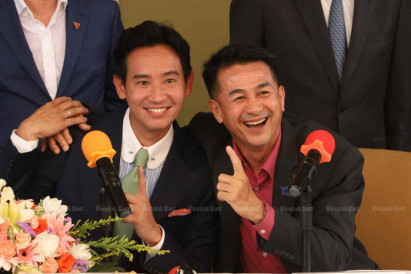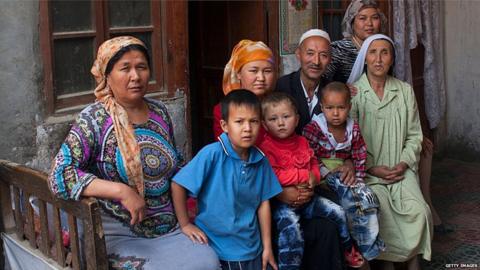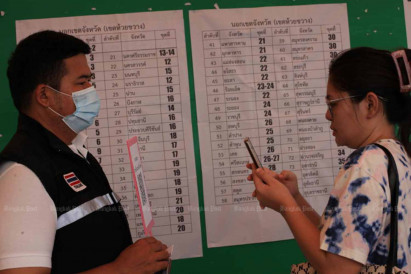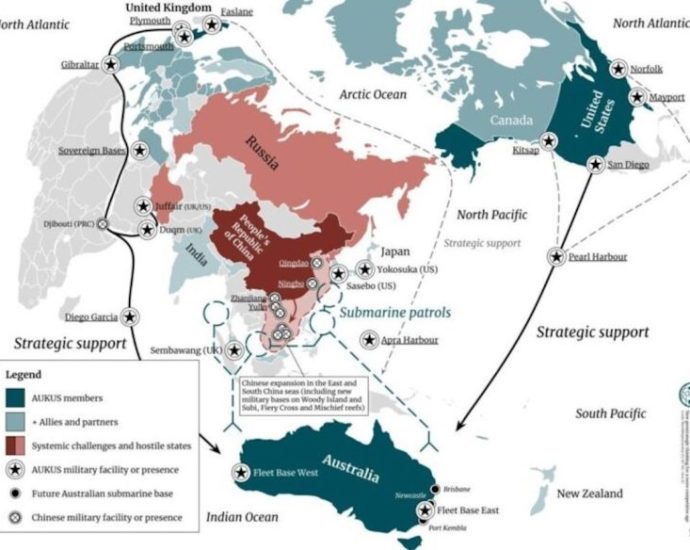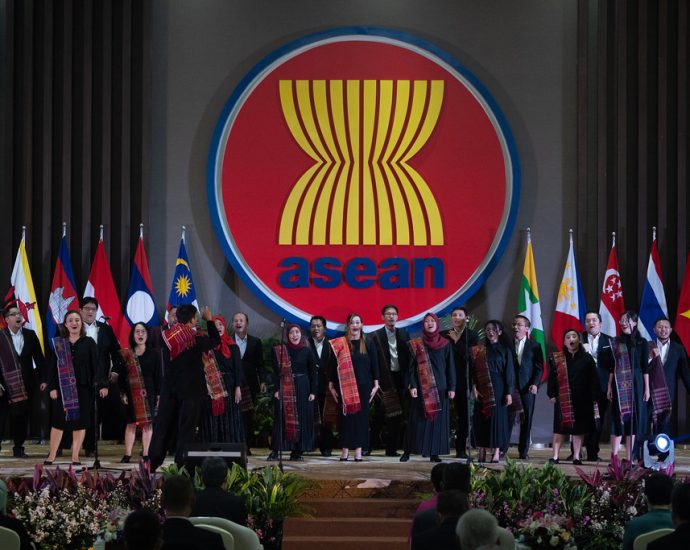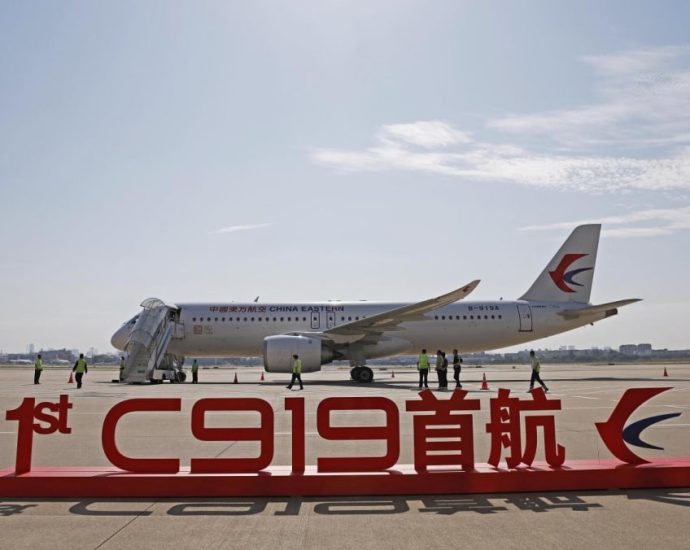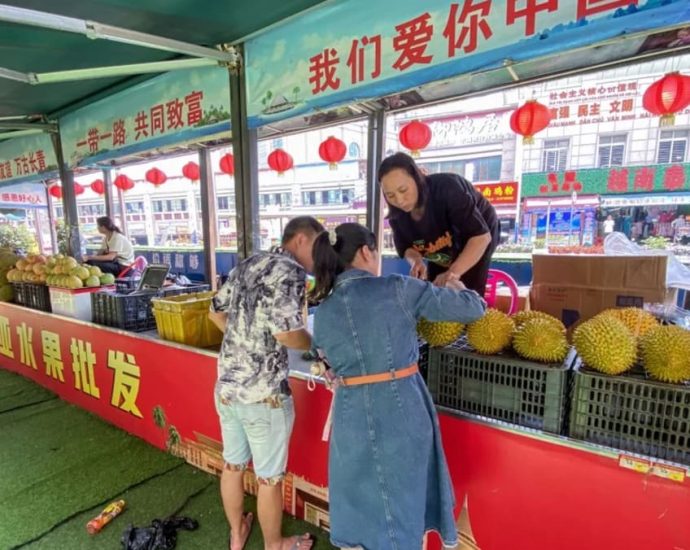Wissanu: Comprehensive complaint may result in annulled election
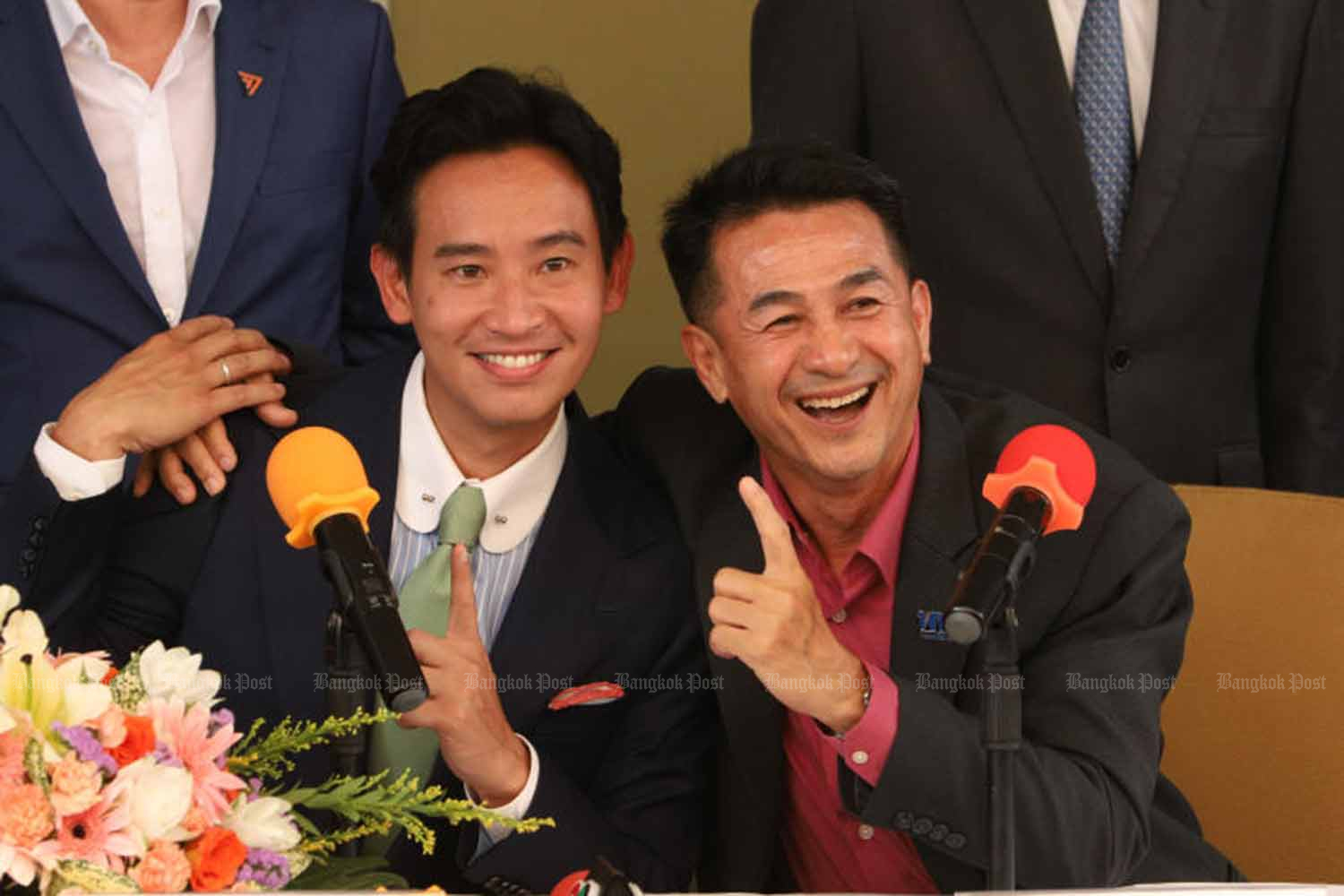
The details listed in complaints will determine if Move Forward Party leader Pita Limjaroenrat is disqualified from being prime minister and whether the May general election should be annulled, according to caretaker Deputy Prime Minister Wissanu Krea-ngam.
Mr Wissanu, the current cabinet’s legal guru, said at Government House on Wednesday that details in complaints against Mr Pita’s shareholding in iTV Plc were a key factor.
If a complaint targets Mr Pita’s elegibility to be an MP he could still be prime minister, because the prime minister is not required to be an MP, he said.
If a complaint targets Mr Pita’s prime ministerial qualifications, he could still be an MP, Mr Wissanu said.
“If a complaint targets both, the court will rule on both,” he said.
A complaint could also also question Mr Pita’s approval of Move Forward Party memberships, Mr Wissanu said.
“In that case, there would have to be a new nationwide general election,” he said.
Mr Wissanu said he was not giving any recommendation on how a complaint should be written.
“It is up to the complainant. The [constitutional] court will rule on the particular issue in a complaint,” he said.
The constitution prohibits a shareholder of a media organisation from running in a general election and Mr Pita’s qualifications were challenged because of his inherited shareholding in iTV Plc, which was long ago merged into Thai PBS.
Complaints filed with the Election Commission target his MP status, his approval of Move Forward candidates in the May 14 election and the whole cabinet that he would form.
“But you should not have such a distant imagination. Consider it step by step. The Election Commission has not taken any action. Do not jump into a negative scenario,” Mr Wissanu said.

Caretaker Deputy Prime Minister Wissanu Krea-ngam
Uyghur student not missing in Hong Kong – Amnesty
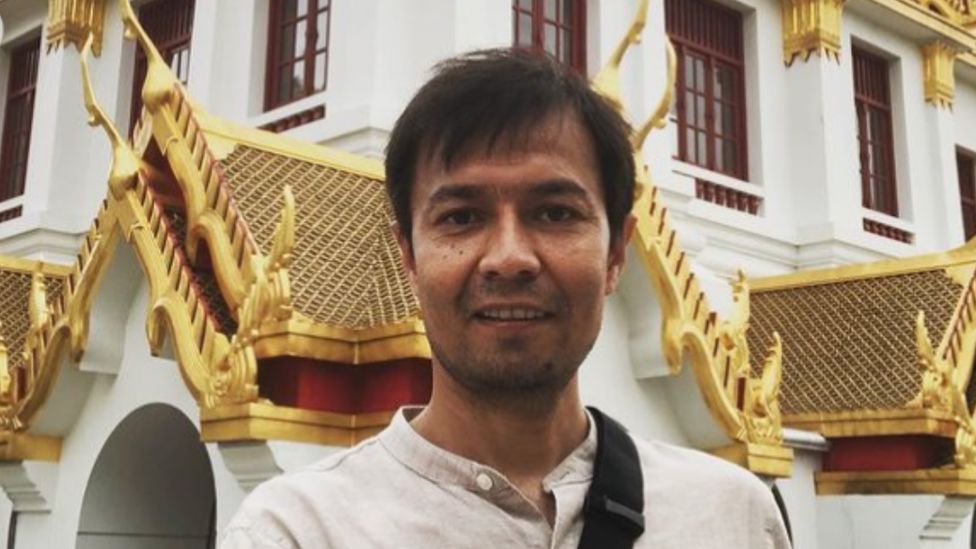 Amnesty International
Amnesty InternationalRights group Amnesty International has corrected its report alleging an Uyghur student went missing from Hong Kong airport, saying he is “accounted for”.
“Abuduwaili Abudureheman… told us he did not travel to Hong Kong, contrary to previous information received,” the group’s correction read.
Mr Abuduwaili is safe in Seoul, his base for the last seven years, his university colleagues say.
The Hong Kong government is calling on Amnesty to “apologise”.
“We will continue to strive to offer support to people who reach out to us when they believe they or their loved ones are at risk,” Amnesty said in a correction added to its original report.
Amnesty had claimed on Friday that Mr Abuduwaili had boarded a flight from Seoul to Hong Kong on 10 May, before losing contact with family and friends.
His last correspondence, Amnesty said, was a text message to a friend claiming “he was being interrogated by Chinese police after arriving at Hong Kong airport”. The Hong Kong government refuted the allegations at the time.
On Monday, the dean at Seoul’s Kookmin University’s College of Physical Education – where Mr Abuduwaili is studying for a doctorate – contradicted Amnesty’s report in an interview with Yonhap News Agency.
Cho Wook-yeon said he had been in constant contact with Mr Abuduwaili, who had recently confirmed with Mr Cho that he was in Seoul.
“Abudureheman has not left Hong Kong and is staying in Korea safely,” he said, adding that he was “surprised” to see reports of the disappearance.
A director at the college repeated this account when contacted by the BBC.
The BBC contacted Mr Abuduwaili for a response, but the student has yet to reply.
Amnesty referred the BBC to its corrected statement when asked about the university staff’s statements. The rights organisation has yet to respond to follow-up questions on how it verified the initial claims about Mr Abuduwaili and his latest statement to Amnesty.
In response to Amnesty’s correction, the Hong Kong government said the organisation had “maliciously smeared” and “slandered” Hong Kong and China, and called for a “sincere apology (made) responsibly”.
Beijing has been accused of committing crimes against humanity and possible genocide against the Uyghur population and other mostly-Muslim ethnic groups in China’s north-western Xinjiang region, which are allegations the government strenuously denies.
There are about 12 million Uyghurs in Xinjiang, and the region is cloaked in a pervasive network of surveillance, including police, checkpoints, and cameras that scan everything from number plates to individual faces.
A landmark UN report released in 2022 accused China of “serious human rights violations” in Xinjiang that “may constitute international crimes, in particular crimes against humanity”.
It also urged China to release “all individuals arbitrarily deprived of their liberty”.
Beijing called the UN report a “farce” arranged by Western powers.
The US, UK and international human rights monitors have accused Beijing of detaining about one million Uyghurs in so-called “re-education camps”, separating children from their families and breaking their cultural traditions.
Additional reporting by Joel Guinto.
Related Topics
-
-
24 May 2022
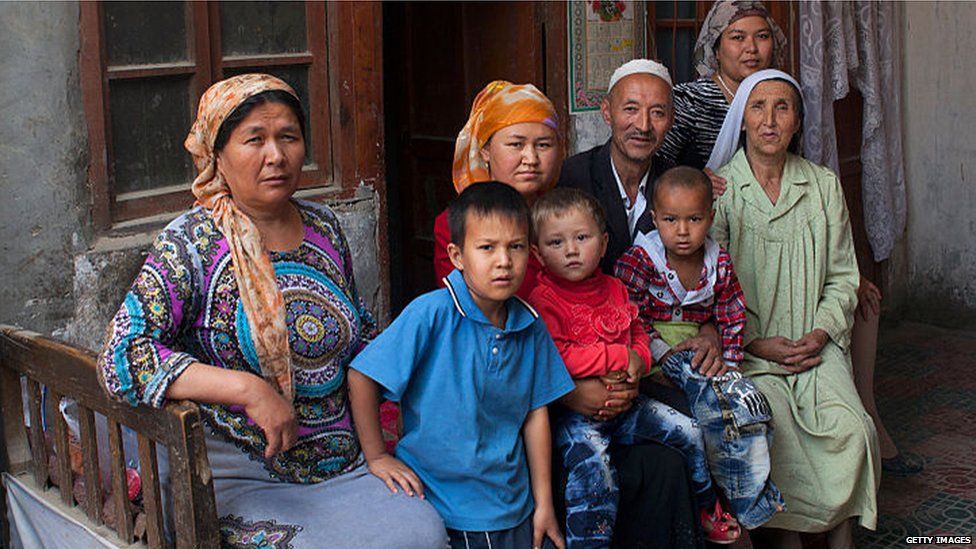
-
-
-
10 June 2021
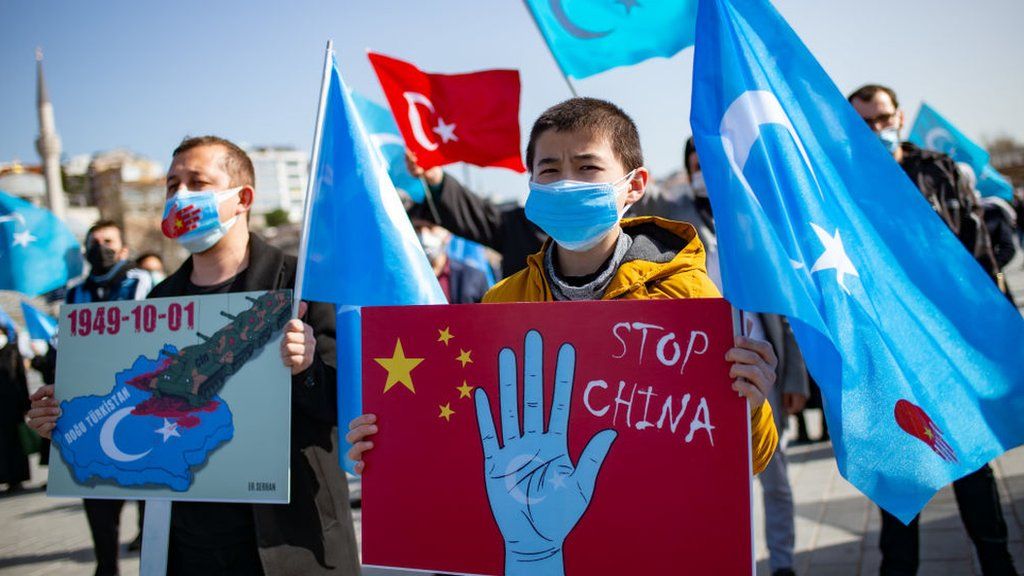
-
-
-
2 September 2022
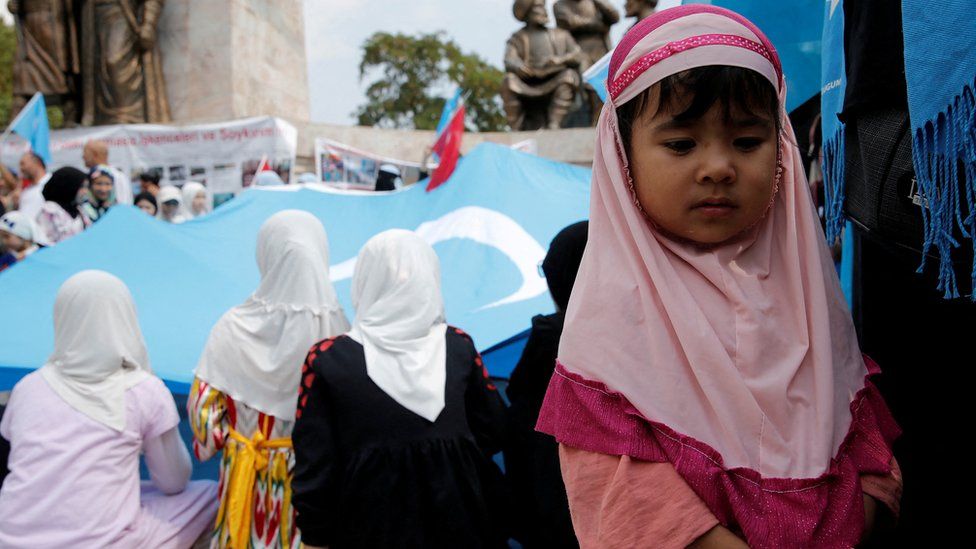
-
Shell Livewire Malaysia 2023 seeks entrepreneurs to enroll
Five winners from each state will recieve US$2,166
Five national winners will get an additional US$6,500
Shell LiveWIRE Malaysia is returning this year and accepting applications from all entrepreneurs in Sabah, Sarawak, and Peninsular Malaysia.
The programme takes entrepreneurs through workshops to develop their business ideas, test their business models, and prepare them for…Continue Reading
‘Boy who cried wolf’: Seoul residents panic after false rocket alarm
“We inform you that the alarm sent at 0641 was incorrectly issued,” a second alert said. The retraction prompted anger and frustration, including calls on social media for Seoul Mayor Oh Se-hoon to resign. “I was taking my two young children to a basement parking lot as advised, in shock,”Continue Reading
Lamphun had highest voter turnout in general election

Lamphun province in the North had the highest voter turnout, 86.25%, at the May 14 general election, with the nationwide figure 75.71%, the Election Commission said on Tuesday.
Countrywide, there were 52,195,920 eligible voters in the election, and 39,514,973 (75.71%) cast their ballots.
The commission said 37,190,071 (94.12%) of the ballots cast in the constituency system were valid; 1,457,899 ( 3.69%) were invalid; and 866,885 (2.19%) opted for “no vote”.
Provinces ranked 1-10 in terms of voter turnout:
1. Lamphun 86.25% (287,556 from 333,392 eligible voters)
2. Phetchaburi 84.52% (328,578 from 388,760)
3. Phatthalung 84.46% (352,577 from 417,460)
4. Nakhon Pathom 83.52% (617,774 from 739,715)
5. Chachoengsao (477,004 from 875,796) and Ratchaburi (565,364 from 682,471), both 82.84%
6. Nakhon Nayok 82.69% (173,608 from 209,959)
7. Saraburi 82.58% (420,663 from 509,408)
8. Krabi 82.53% (294,873 from 357,264)
9. Ayutthaya 82.30% (546,348 from 663,820)
10. Songkhla 82.01% (899,221 from 1,096,442)
Elsewhere, Bangkok’s voter turnout was 74.26%, Chiang Mai 81.98%, Nakhon Ratchasima 76.29% and Phuket 75.05%.
Chinese AI chatbot firm Xiao-I eyes global market after Nasdaq IPO on ChatGPT fever
When a user sends questions to the WeChat account of China Merchants Bank, for example, it will bring up an AI chatbot called “Little Zhao”, which is able to answer basic inquiries. So far, Xiao-I has served more than 1,000 business clients across over 50 industries, mostly based in mainlandContinue Reading
AUKUS enhancing undersea deterrence against China
In line with the Chinese Communist Party’s imperative to oversee “the great rejuvenation of the Chinese nation” by 2049, US intelligence sources indicate that Chinese President Xi Jinping has ordered the People’s Liberation Army to become capable of countering American military power in the Indo-Pacific and ready for a takeover of Taiwan by 2027.
This is an alarming prospect, lent credence by recent Chinese military exercises around the island. Admiral John Aquilino, commander of the US Indo-Pacific Command (INDOPACOM), in his March Congressional testimony said that the PLA Navy (PLAN) is on track to deliver 440 battle-force ships by 2030, including significant increases in aircraft carriers and major surface combatants.
As it grows in strength, the PLAN is likely to use its large naval forces to uphold further, even enforce, illegitimate Chinese claims over areas of the East and South China seas – areas through which foreign vessels of all kinds have rights to move under the United Nations Convention on the Law of the Sea (UNCLOS), which China ratified in 1996.
In this worsening geopolitical environment Australia, the United Kingdom and the United States have created the AUKUS submarine and technology-sharing agreement, which has been called a “trilateral, security partnership” based on defense capabilities that support “mutual national defense objectives.”
In the words of Mara Karlin, US assistant secretary of defense for strategy, plans, and capabilities, the agreement will “lift all three nations’ submarine industrial bases and undersea capabilities, enhancing deterrence and promoting stability in the Indo-Pacific.”
Deterring indirectly
Before explaining how AUKUS facilitates “direct deterrence” from the perspective of capabilities, capacity, and force posture, it is important to identify forms of “indirect deterrence,” namely by promoting deterrence through a constellation of security alignments and the strengthening of the defense industrial base.
In the case of these latter two forms of “indirect deterrence,” AUKUS – as with the US-Japan-Australia Trilateral and the Quad – is a minilateral. Such a minilateral is not strictly an alliance, but it provides its members with a shared pool of military capabilities – or what has also been dubbed a “federated model of defense.”
Within the United States, these alignments gel with the administration’s organizing principle of “integrated deterrence,” which was laid out in the 2022 National Security Strategy, the National Defense Strategy, and the Nuclear Posture Review.
In addition to accelerating efforts to promote planning, coordination, and operations among various US government agencies and US allies, AUKUS also provides integrated deterrence at the level of the defense industrial base for all three cooperating nations.
While it would be a stretch to call this “undersea deterrence,” it would also be remiss not to mention the bolstering effect AUKUS will have on naval shipyards, the nuclear enterprise and undersea sensor and weapons systems industries, which all contribute to national strength.
Directly deterring from beneath the sea
Defining deterrence as the “building of combat-credible forces across all domains and across the full spectrum of conflict to deter aggression,” Karlin also noted that AUKUS is about more than just pillars I and II, but also includes a focus on undersea deterrence throughout the Indo-Pacific across a range of areas.
At the simplest level, the agreement adds to undersea deterrence by delivering new advanced warfighting capabilities to its members, particularly Australia: it provides two types of nuclear-powered attack submarine (SSN) platforms – the Virginia class and “AUKUS class” to replace Australia’s aging Collins-class of conventionally powered submarines.
While it is a crude measure, more vessels with long-range capabilities, amplified by the advanced weapons capacity and kinetic effects that they can deliver at greater range, may deter an adversary more effectively, in the event that it contemplates aggression.

AUKUS thus provides all three countries with a wider distributed force posture closer to likely areas of operations, vis-à-vis the PLA Navy in the Western Pacific.
As shown in the map above, nuclear-propelled submarines greatly complicate the PRC’s calculus. They can be sent north of Australia to stalking grounds surrounding the South and East China seas, which are critical to Chinese maritime communication lines across the Pacific and to the Middle East and East Africa.
By making these routes more vulnerable to interdiction, AUKUS forces the PLAN into a more defensive posture, which may direct resources away from large warships and logistics vessels designed for expeditionary operations.
It does this through the two-part pathway framework agreed upon in March 2023. The first part of the pathway consists of increased port visits by US and UK SSNs from 2023, which adds to the ability of INDOPACOM and the Royal Navy to regularly position forces east of the Strait of Malacca and west of the International Date Line (IDL) – a helpful softening of the tyranny of distance confronting US and UK naval forces.
The second part of the framework includes a rotational element in Australia under the Submarine Rotational Force West intended to begin by 2027. According to the Australian Department of Defense, this will be composed of “a rotational presence … of one UK and up to four US, nuclear-powered submarines” at Fleet Base West.
This is likely to draw in Astute-class and Virginia-class submarines. Again, this adds to a joint and combined campaign, allowing the three allies to synchronize joint capabilities through increased exercises and further cementing persistent forces in between the Strait of Malacca and the IDL.
Forms of deterrence provided by AUKUS
AUKUS, therefore, provides deterrence at multiple levels. The first two are forms of “indirect deterrence,” or factors that strengthen general deterrence at the state level.
- AUKUS provides a signal of intent – through that of political alignment – potentially muddying the calculations of a potential aggressor. This is AUKUS as a minilateral grouping, and as architecture rather than as a defense industrial deal.
- AUKUS provides indirect deterrence by adding to national strength by adding to the defense industrial base of each member by providing opportunities for industrial cooperation and production. It releases national resources toward shipping industries that may have previously been in decline.
AUKUS has several effects in terms of direct deterrence, too. It is helpful to use the four-point “Seize the Initiative” INDOPACOM approach to divide them:
- In its simplest and most direct form, AUKUS contributes to undersea deterrence by providing its members, notably Australia, with new advanced warfighting platforms (the SSNs and their systems).
- That these are superior systems, with longer ranges provided by their nuclear propulsion, adds to their impact on potential adversaries’ logistics and planning. As submarines can hide underwater, they are an asymmetrical weapons system, designed to threaten sea lanes and surface shipping, both commercial and military.
- Then there are the agreements made in March of this year, such as the two-part pathway that allows for a second direct form of undersea deterrence: that of providing those platforms in a distributed posture across the region. Whether through port visits or a more sustained presence through Submarine Rotational Force West, AUKUS brings more allied forces into the Western Pacific.
- Then, finally, there is the deterrent effect produced by Submarine Rotational Force West itself: that of an integrated allied operational force that ideally will operate under a combined command structure.
A potent instrument
As American, Australian, and British submariners train, exercise, and deploy, so will their operational capability and efficacy increase. They will become an integrated force capable of great strategic effect – deterrence – in the Indo-Pacific, a valuable asset for any war planner.
The question whether these six forms of deterrence will deter Xi from ordering PLAN forces to lunge across the Taiwan Strait or from undertaking coercive activity across the First Island Chain is unclear.
While they might not be sufficient– given the time it takes for these systems and structures to come on line – these nascent capabilities will complicate PLAN planning and logistics.
In the future, in any actual kinetic contingency, they will also provide a potent instrument to contain Chinese regional ambitions and military coercion.
John Hemmings is senior director of Indo-Pacific foreign and security policy at the Pacific Forum in Honolulu, which originally published this article. Asia Times is republishing it with permission.
ASEAN firms up its struggle for centrality

Amid growing rivalry between China and the US, the rise of the Global South and emergence of rising powers such as India, Indonesia, Brazil and South Africa, the international system is heading toward an order that is multipolar but also more decentralized. This is particularly so in the case of the emerging Indo-Pacific regional order.
Defined by the Association of Southeast Asian Nations (ASEAN) as a sum of the Asia-Pacific and Indian Ocean region’s dynamism, the Indo-Pacific regional order is getting increasingly polarized, going through processes of fragmentation and de-fragmentation.
In view of these challenges, ASEAN’s task of keeping itself central to the regional dynamics seems increasingly difficult. In addition to the two superpowers China and the US, rising powers such as India, Australia and Japan, and re-entry of the European powers through the EU have made the politics among nations multidimensional and multilayered.
The emergence of the BRICS as a representative organization of the Global South has also been gaining traction, with speculations of Indonesia, Argentina and Iran joining the grouping.
Increasingly, minilateral initiatives such as AUKUS, but more importantly the Quadrilateral Security Dialogue, which is a cooperation mechanism among four Indo-Pacific powers – Japan, India, Australia, and the US – are emerging as new providers of security to the Indo-Pacific region.
These key developments have coincided with the emergence of unconventional regional groupings such as the Shanghai Cooperation Organization that are marked by the membership and leading role of revisionist powers (Russia and China, but also with India as a member, which is an integral part of the Quad).
For ASEAN, thus, the situation becomes a lot more complicated than a binary choice between two superpowers, the way it was during the Cold War years.
New regional institutional architectures such as the SCO, Asian Infrastructure Investment Bank (AIIB), Quad and AUKUS, among others, are not exactly in tune with ASEAN’s core priorities. These new developments pose a danger to the work this one organization in particular has been doing for many years. Whether one likes it or not, ASEAN has either intentionally or unintentionally aided in regionalism and peace-building.
The essential ASEAN ideals of consensus, non-interference, inclusivity, non-intervention, the goal to achieve security through dialogue, devotion to peace and stability, and constructive engagement have been ingrained into both the East Asia Summit (EAS) and the Asia-Pacific Economic Cooperation (APEC) forum.
The ASEAN Plus One mechanisms, ASEAN Regional Forum (ARF), and ASEAN Defense Ministers’ Meeting Plus (ADMM-Plus) have also manifested these ideas into reality.
Clearly, power is not the driving force for ASEAN, which is mindful that even if all its member states pooled their resources, they would pale in comparison with the US or China.
Cognizant of these constraints, ASEAN seeks its centrality and agency through norms that are also dependent on the behavior of dialogue partners that may or may not believe in these norms. This is where ASEAN’s capacity to establish itself as a “norm entrepreneur” comes to the forefront.
China’s recent decision to sign the Southeast Asian Nuclear Weapon Free Zone Treaty (SEANWFZ) or Bangkok Treaty to counter AUKUS is a classic example of how ASEAN norms are utilized as a moderating agent by opposing parties in the region.
Last November saw Ukraine sign on to the Treaty of Amity and Cooperation (TAC), a legally binding code to manage inter-state relations in the region and beyond. This may be symbolic, perhaps even purely motivated by strategy, but it reflects ASEAN’s value and appeal.
AOIP, a strategy for cooperation
The TAC and SEANWFZ open new hopes and possibilities for the ASEAN Outlook on Indo-Pacific (AOIP). In 2019, ASEAN introduced the AOIP, a five-page document that outlines key areas of cooperation to be undertaken and the mechanisms and principles within which these would be realized.
Laced with ASEAN’s signature terms such as inclusivity and exclusion of, for example, any mention of China and the United States, the AOIP offers an alternative pathway to the Indo-Pacific region.
The AOIP bridges the Indo-Pacific strategies of the contesting parties. It proposes utilizing existing ASEAN-centered regional architecture. No doubt the AOIP is an attempt not just to remain central to the ongoing discourse and developments emerging within the region, but also to shape it.
Initial reactions to the AOIP were mixed but over time, it has been referenced in most of the Indo-Pacific strategies of the other actors. Japan, India, the European Union, and even the US and China have mentioned it, and some welcomed it; naturally these have highlighted aspects of it that their own Indo-Pacific strategies share.
Not bad, but is it enough? Acknowledging similarities is far from de-intensifying regional contestations. Tensions are expected to remain, and possibly increase. Then again it is unfair ask these to be placed on the shoulders of ASEAN.
The establishment of ASEAN did not after all end the Cold War. The AOIP is not the panacea for regional peace. However, if used rightly, it can temper ongoing contests. This is where ASEAN’s focus should remain.
There is now the ASEAN Maritime Outlook (AMO) proposal on the table. Speculation is rife about the contents. Certainly, some anticipated aspects such as climate and environment matters may be more acceptable than others, such as the South China Sea. It offers ASEAN another instrument to bring key actors to the table and shape the discourse.
The real challenge to ASEAN now is remaining a united and cohesive unit during this new age of contest. ASEAN has consistently remained neutral, a recognition of the complex and dependent relationship that individual member states have with both China and the US.
Nevertheless, ASEAN’s failures to achieve consensus on the South China Sea issue in 2012 and 2016 are reminders how great powers can instigate cracks when it suits them.
Despite continued skepticism about and sometimes frustration with ASEAN, it remains, whether by design or circumstance, relevant to regionalism and peace-building. The AOIP, and its possible derivatives such as the AMO, can be a viable alternative pathway if leveraged strategically.
More important, it offers the contesting powers a convenient fallback position – a lowest common denominator – if they want it.
China’s C919 debut could inspire aviation supply chain to take off, but self-sufficiency ‘difficult’
By late 2022, Comac had received orders from 32 companies for 1,035 C919 planes, Shanghai’s municipal science and technology commission said in February. China is trying to raise the proportion of domestic parts used in the C919, and the alternative CJ-1000A engine is under development. According to a report publishedContinue Reading
China’s Vietnamese durian imports seen pushing total demand for fruit to nearly 1 million tonnes a year
The growing market potential for durian in China has pushed cities in Guangxi Zhuang autonomous region, which borders Vietnam, to beef up logistics to facilitate imports from its neighbour. Chongzuo, a border city in Guangxi, is building an advanced logistics centre with cold-chain storage and food-processing facilities to improve theContinue Reading

